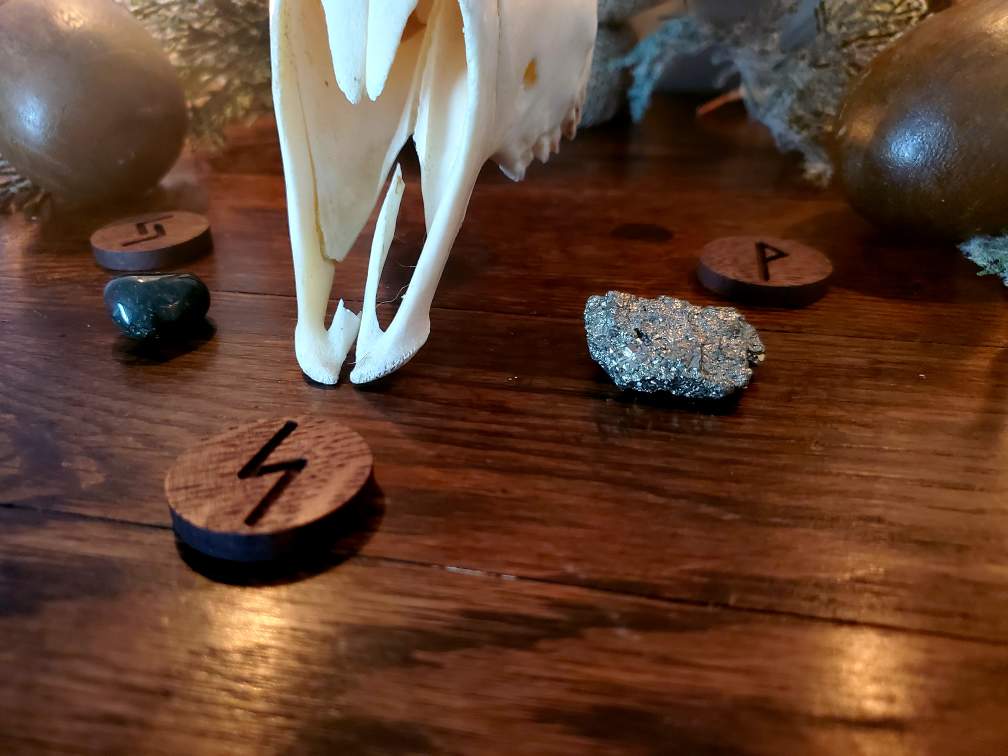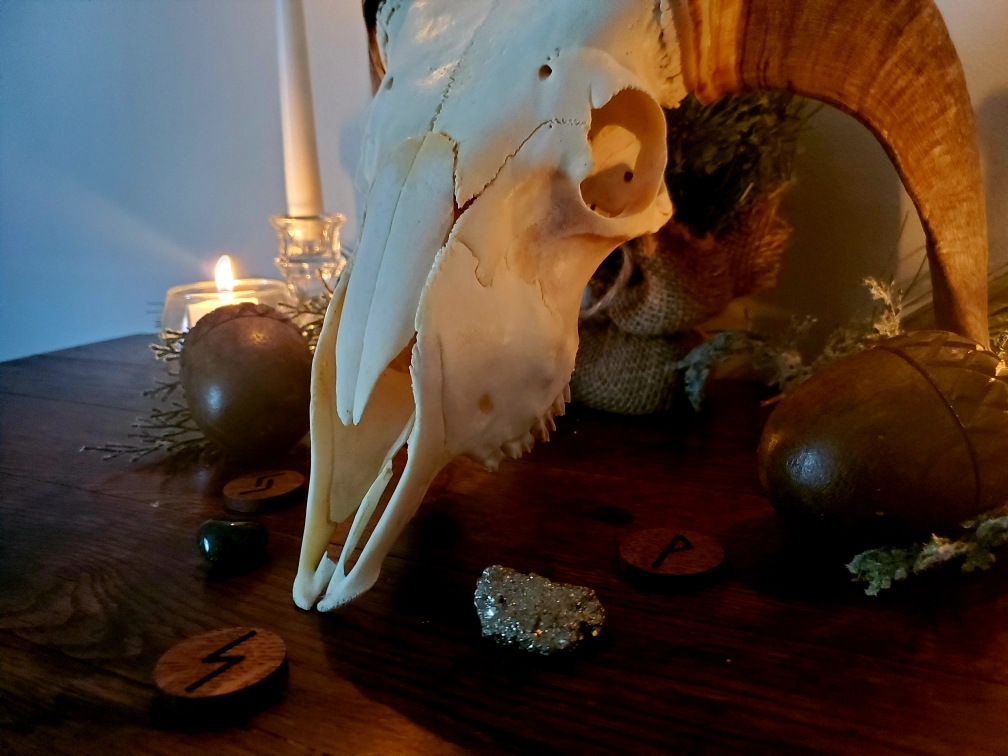1. Evergreen Tree- Nestled behind the goat skill is an evergreen tree, which is a traditional symbol of Yule. It represents everlasting life and light in the darkness. Unlike deciduous trees that lose their leaves during the winter months, evergreen trees keep their leaves, remaining perpetually green and full of life, even during the darkest, coldest time of the year. These lovely trees were often brought into the home, whether whole or just clippings, and decorated with candles and shiny decorations to keep away witches, ghosts, evil spirits, and illness while shepherding in warmer weather. (Where did I get it: Michael's 2012; Cost: $5)
4. Garnet and Pyrite- Bloodstone was known as heliotrope by the Ancients which comes from the Greek helios meaning "sun" and trepein meaning "to attract." As such, bloodstone or heliotrope signifies "sun-turning" and is said to attract the rays of the Sun. Like the candles, this is a form of sympathetic magic to bring forth the rebirth of the Sun and ward off the neverending night. The pyrite, like the bloodstone, also represents the Sun, reflecting the rays of the candles out into the Universe to lend Him strength. Pyrite is also a symbol of wealth and prosperity, ensuring that we have everything we need to make it through the next couple of months until Spring. (Where did I get it: Various Subscription Boxes and Metaphysical Stores; Cost: ~$5)
6. Wooden Acorns- One of my favorite myths is the tale of the Oak and Holly Kings. The Holly King is at his peak during the Winter Solstice, but his power begins to weaken as the Oak King, who is reborn on the Winter Solstice, regains power. The two wooden acorns flanking each side of my altar are an ode to the Oak King. They also represent strength, new life, and rebirth, a promise of what is to come once the darkness passes. Oaks are well known for their protective nature, which is needed on the longest night of the year. The acorns not only represent the Oak King and the strength He provides, but also provide my home with protection from wayward spirits and the Wild Hunt. (Where did I get it: Gifted; Cost: Free)
7. Goat Skull- I have to give a huge thanks to my friend, Abby, who so graciously gifted me with this lovely goat skull earlier this year. It is certainly one of the best gifts I have ever received and I was so excited to place it on my altar. Goats are associated with fertility, virility, and lust (all themes associated with Yule), as well as independence, ambition, and persistence. Even against all odds, goats will give everything they have, reminding us to persevere even in the face of darkness. Goats also represent the Horned God who is reborn on the solstice. In Sweden, large straw goats, known as Yule goats or Julbock, are built on the first day of Advent. This may be a nod to Thor, whose chariot was pulled by two goats, or possibly the remnants of an old harvest tradition. Either way, the Yule goat has become a symbol of Yule in many Scandinavian countries and is said to watch over holiday preparations and even bring gifts, much like Santa. (Where did I get it: Gifted; Cost: Free)
TOTAL COST: ~$16
Like my other altars, most of the items I use are found, made, or purchased for around $1, although if the items must be purchased by you, then the cost will be higher. For this particular altar, many of the items were gifts, thus reducing my cost significantly. I hope you find this sort of breakdown helpful, especially for those of you looking to create Instagram-perfect altars on a budget!
If you liked this post and would like to support future content, please consider leaving a small tip in the jar.









No comments :
Post a Comment
This witch loves to hear from her readers, so please share your thoughts below!